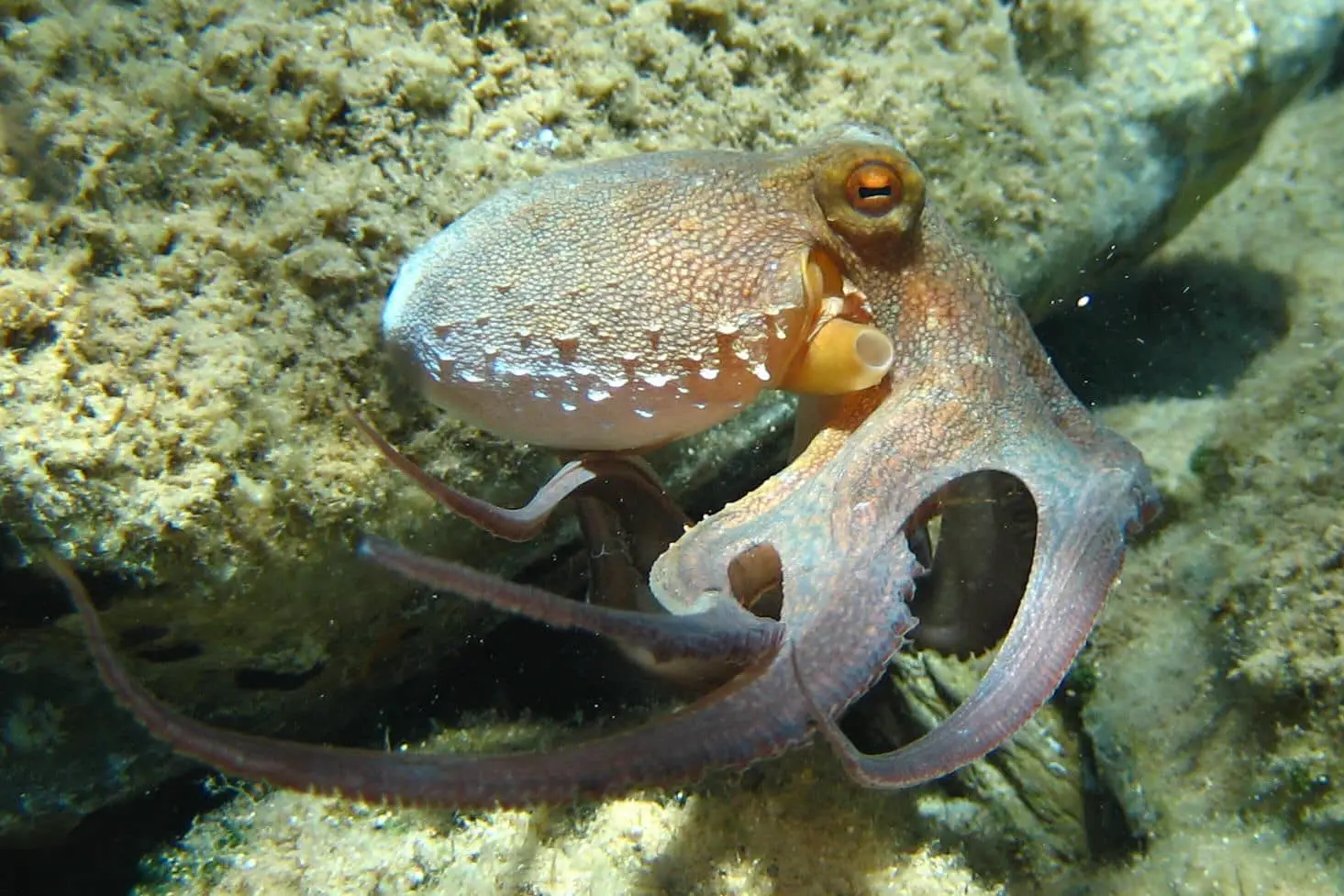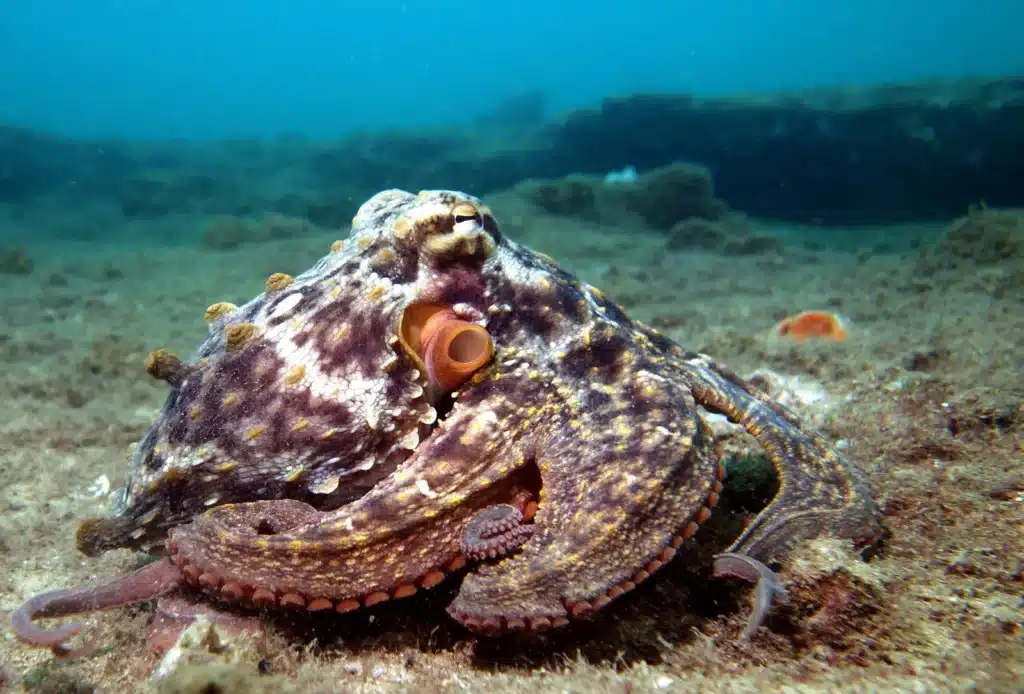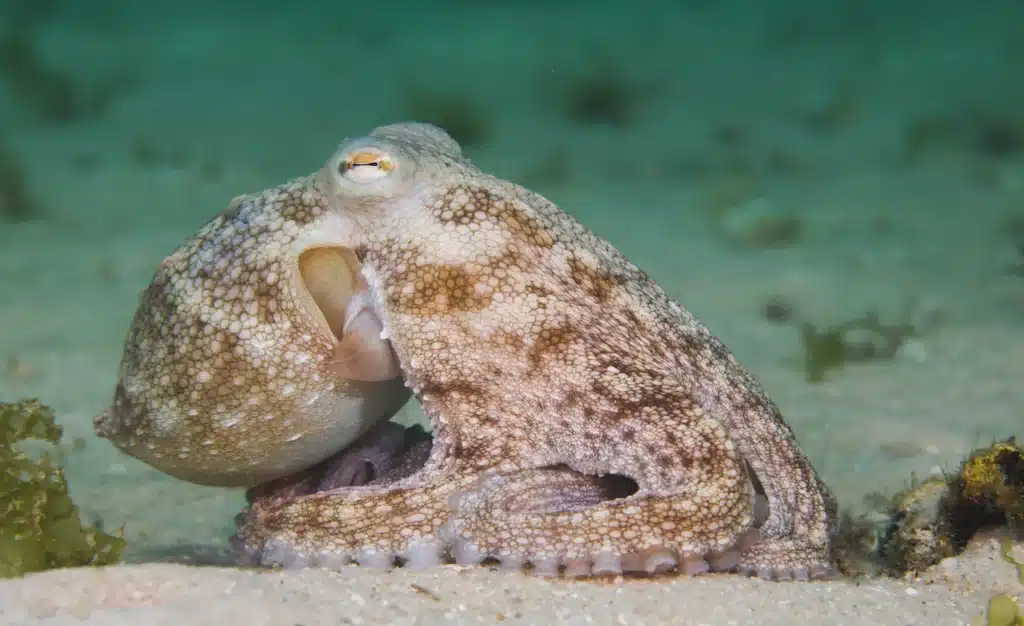How Long Do Female Octopus Live

Introduction
How Long Do Female Octopus Live: The enigmatic world of octopuses has long fascinated scientists and marine enthusiasts alike. These remarkable cephalopods, known for their intelligence and adaptability, continue to reveal astonishing secrets of their existence. One of the most intriguing aspects of their biology is their lifespan, particularly that of female octopuses.
Octopuses are renowned for their short lives, which typically span a few years. However, it is the female octopuses’ lifespan that truly captivates researchers. The female octopus’s life is marked by a series of remarkable events, from hatching as tiny, vulnerable larvae to navigating the complexities of adulthood and motherhood.
In this exploration, we delve into the intricacies of how long female octopuses live and the factors that influence their lifespans. We uncover the unique challenges they face, including predation, environmental pressures, and the demanding task of reproduction.
Moreover, female octopuses exhibit a remarkable phenomenon called senescence, where they undergo rapid aging and eventual death after reproducing, highlighting the exceptional sacrifices they make for their offspring. We also investigate the role of environmental conditions, such as temperature and food availability, in shaping their lifespans.

What is the lifespan of a female octopus?
It varies according to species, but octopuses, both wild and captive, live roughly 1 to 5 years. This short lifespan is a consequence of a reproductive strategy known as semelparity, meaning that octopuses breed only once in their lifetime and die shortly thereafter.
The lifespan of a female octopus is relatively short and varies among different species. On average, most female octopuses live for just one to two years. However, this timeframe can be influenced by several factors, including the octopus species, environmental conditions, and reproductive events.
One of the most remarkable aspects of a female octopus’s life is its dedication to reproduction. Octopuses are semelparous, meaning they reproduce only once in their lifetime. After laying a clutch of eggs, which can number in the thousands, the female octopus enters a phase known as senescence. During this period, she devotes all her energy to guarding and caring for her eggs, often without feeding. This selfless commitment to maternal care can accelerate her aging process, and she typically dies shortly after her eggs hatch.
The species-specific differences in lifespan are fascinating. Smaller species, like the common octopus (Octopus vulgaris), tend to live for a shorter duration, while larger species like the giant Pacific octopus (Enteroctopus dofleini) can live longer, up to five years or more.
Understanding the lifespan of female octopuses is crucial for researchers studying marine ecosystems and reproductive strategies. It underscores the intricate balance between survival and reproduction in the complex world of cephalopods beneath the ocean’s surface.
What is the oldest living octopus?
Octopus Fun Fact
The longest living known octopus is the Northern Giant Pacific Octopus (Enteroctopus dofleini) who can survive between 3-5 years in the wild. However, a Deep Sea Octopus (Graneledone boreopacifica) was reported guarding its eggs for 4.5 years!
The quest to identify the oldest living octopus presents a fascinating challenge due to the relatively short lifespans of these remarkable cephalopods. Octopuses are generally short-lived, with most species surviving for just one to two years. This is primarily because they employ a semelparous reproductive strategy, meaning they reproduce only once in their lifetime, and this intensive process often leads to their death shortly afterward.
One of the species that stands out in terms of longevity is the giant Pacific octopus (Enteroctopus dofleini). This largest of all octopus species can live longer than most, with lifespans ranging from three to five years or more in some cases. Some reports suggest that the oldest known giant Pacific octopus lived to be around five years old.
However, pinpointing the absolute oldest living octopus remains a challenge due to the elusive nature of these creatures and the variability in their lifespans. In the depths of the ocean, where many octopuses reside, it’s difficult for scientists to monitor individual animals over extended periods.
The search for the oldest living octopus continues to be an intriguing aspect of marine biology, highlighting the resilience and adaptability of these enigmatic creatures in their relatively short yet eventful lives.
Why do female octopus stop eating?
During the months or YEARS that follow egg-laying, an octo-mom’s sole purpose becomes protecting those babies as they develop. She won’t even leave the eggs to hunt for food—and, in fact, the part of the octopus’s brain that governs her urge to eat shuts that urge down. As a result, the octo-mom slowly starves.
Female octopuses stop eating for a compelling and biologically significant reason related to their reproductive strategy. Octopuses are semelparous, which means they reproduce only once in their lifetime. This unique reproductive process is incredibly energy-intensive and demands the utmost dedication from the female.
When a female octopus is preparing to lay her eggs, she undergoes a physiological and behavioral transformation. As she carefully tends to her developing eggs, her body undergoes several changes. One of the most notable changes is the cessation of feeding. The female octopus redirects all her energy and resources toward caring for her eggs, which involves not only guarding them but also maintaining their oxygen supply by gently fanning them with her arms and cleaning away debris to prevent fungal growth.
This selfless maternal care requires a tremendous amount of energy, and the female sacrifices her own well-being to ensure the survival of her offspring. During this period, which can last several weeks to several months, the female’s focus is entirely on her eggs, and she does not seek out or consume food. This devotion to her young is a remarkable example of parental sacrifice in the animal kingdom, and it is a testament to the complexity and dedication of these remarkable creatures in their reproductive journey.
Can female octopus live after giving birth?
In other words, yes, octopuses die after giving birth.
Some females in captivity even seem to be aware of their fate and will speed up this process by banging into the sides of their tank, tearing off pieces of skin, or even eating pieces of their own tentacles.
Female octopuses do not typically live long after giving birth. In fact, female octopuses often die shortly after their eggs hatch. This phenomenon is a result of their unique reproductive strategy, which is known as semelparity.
Semelparity means that octopuses reproduce only once in their lifetime. When a female octopus lays her eggs, she invests a tremendous amount of energy and effort into caring for them. During this time, the female does not eat, and her sole focus is on ensuring the well-being of her developing offspring.
The intense maternal care required during this period is exhausting, and it takes a toll on the female’s body. After the eggs hatch, the female is often in a weakened and depleted state. This, coupled with the fact that octopuses are typically solitary animals, means that she is highly vulnerable to predation in the wild.
As a result, the female octopus’s lifespan is significantly shortened by her reproductive efforts, and she usually dies shortly after her eggs hatch. This is a remarkable sacrifice made by female octopuses to maximize the chances of their offspring’s survival, illustrating the intricate balance between reproduction and parental investment in the world of cephalopods.
How long do male and female octopus live?
BLANKET OCTOPUS LIFESPAN
Males die soon after they have found a female and detach their sex arm, which is longer than their body, inside the female’s mantle. Females will continue to live and grow for many months or years longer than the males, spawn their eggs, brood their eggs, and die shortly after the eggs hatch.
The lifespan of octopuses varies between male and female individuals and is influenced by several factors, including species, environmental conditions, and reproductive events.
Female octopuses generally have a shorter lifespan than their male counterparts. On average, most female octopuses live for about one to two years. This relatively short lifespan is primarily due to their unique reproductive strategy, known as semelparity. Female octopuses invest a significant amount of energy and effort into laying and caring for their eggs, and this process often leads to their death shortly after their eggs hatch.
Male octopuses, on the other hand, tend to have slightly longer lifespans. They typically live for about one to three years. The difference in lifespan between males and females can be attributed to the less physically demanding reproductive role that males play. While they still die shortly after mating, they do not experience the prolonged period of maternal care that females undergo.
It’s important to note that there is variability in lifespans among octopus species. Some larger species, like the giant Pacific octopus, can live up to five years or more, while smaller species may have shorter lifespans.
Overall, the lifespan of male and female octopuses is shaped by their unique reproductive strategies and the environmental conditions in their respective habitats.
Are there any exceptions to the typical lifespan of female octopuses?
While the typical lifespan of female octopuses is relatively short due to their semelparous reproductive strategy, there are some exceptions and variations that challenge the norm. These exceptions can be influenced by several factors:
- Species Differences: Different octopus species have varying lifespans. Some smaller species, like the common octopus (Octopus vulgaris), often exhibit shorter lifespans of around one year, while larger species, such as the giant Pacific octopus (Enteroctopus dofleini), can live longer, sometimes reaching up to five years.
- Environmental Conditions: The lifespan of female octopuses can be influenced by the specific environmental conditions in their habitat. Octopuses living in regions with stable and favorable conditions may have a better chance of surviving longer.
- Reproductive Timing: The timing of reproduction can impact the female’s post-reproductive lifespan. If a female octopus reproduces earlier in life, she may have a longer period of time to live after laying her eggs compared to a female that reproduces later.
- Individual Variability: Just like in many species, there is individual variability among octopuses. Some individuals may have genetic or physiological factors that allow them to live longer than others.
While these exceptions exist, it’s important to note that the fundamental principle of semelparity remains a defining feature of female octopuses. Regardless of the exceptions, most female octopuses still face a significant decrease in lifespan after reproducing, as they redirect their energy and resources toward caring for their eggs, often leading to their eventual demise.
What factors influence the lifespan of female octopuses?
The lifespan of female octopuses is influenced by a combination of biological, environmental, and behavioral factors. One of the primary determinants is species-specific. Different species of octopuses have varying lifespans, with some living only a year or two, while others can survive for several years.
Reproductive patterns also play a crucial role. Octopuses are semelparous, meaning they reproduce only once in their lifetime, and this event often signals the end of their life. After laying and guarding their eggs, female octopuses cease feeding, diverting all their energy into caring for their offspring until hatching. This intense maternal care can weaken the female and make them more susceptible to predators.
Environmental conditions are another factor. Octopuses are highly adaptable creatures, but changes in water temperature, pollution levels, and habitat availability can impact their health and lifespan. Warmer waters may accelerate their metabolic rates, potentially shortening their lifespan.
Predation risk also matters. Octopuses face a constant threat from predators like sharks, seals, and larger fish. Their ability to evade these threats and find suitable hiding places can determine how long they live.
The lifespan of female octopuses is a complex interplay of biological characteristics, reproductive strategies, environmental conditions, and predation risks, making it a fascinating subject of study in marine biology.
How does captivity affect the lifespan of female octopuses?
Captivity can significantly impact the lifespan of female octopuses, often leading to both positive and negative outcomes depending on the conditions and care provided. In captivity, octopuses are shielded from natural predators, reducing the immediate threat to their lives. This, in theory, could extend their lifespan.
However, captivity also comes with its own set of challenges. Octopuses are highly intelligent and curious creatures, and they require mental stimulation and a complex environment to thrive. Inadequate living conditions, such as small, barren tanks, can lead to stress, boredom, and aggression. These factors can weaken their immune systems and overall health, potentially shortening their lifespans.
Diet plays a crucial role in captivity as well. A well-balanced diet that mimics their natural food sources is essential. Overfeeding or offering inappropriate foods can lead to obesity and related health issues, while underfeeding can result in malnutrition and reduced longevity.
Moreover, the breeding and reproductive behaviors of octopuses can be challenging to replicate in captivity, often leading to a shorter lifespan as they may not get the opportunity to reproduce.
While captivity can protect octopuses from immediate threats in the wild, providing appropriate mental stimulation, environmental enrichment, and nutrition are crucial factors in ensuring a longer and healthier lifespan for female octopuses in captivity.

Conclusion
The lifespan of female octopuses is a captivating and intricate aspect of their biology. These intelligent and highly adaptable creatures navigate a world filled with challenges, and their longevity is shaped by a combination of factors.
Female octopuses, while relatively short-lived in comparison to some other marine species, exhibit a complex and dynamic existence. Their lives are marked by a remarkable journey, from hatching as tiny, defenseless larvae to the challenging stages of adulthood, reproduction, and eventual senescence. The sacrifice made by female octopuses after reproducing is striking, as they invest so much energy and effort in caring for their eggs, even at the cost of their own lives.
Environmental conditions play a significant role in determining the lifespan of female octopuses. Factors such as temperature, food availability, and predation risk can influence their longevity. As our understanding of these factors deepens, we gain valuable insights into the delicate balance between survival and reproduction in the world of octopuses.
Intriguingly, the study of female octopus lifespans also sheds light on the broader concepts of reproductive strategies and life-history evolution in marine ecosystems. While their lives may be brief, the legacy of knowledge they leave behind continues to enrich our understanding of the fascinating underwater realm. The mysteries of female octopus lifespans are a testament to the wonder and complexity of life in the oceans, reminding us of the countless marvels that await exploration beneath the waves.



